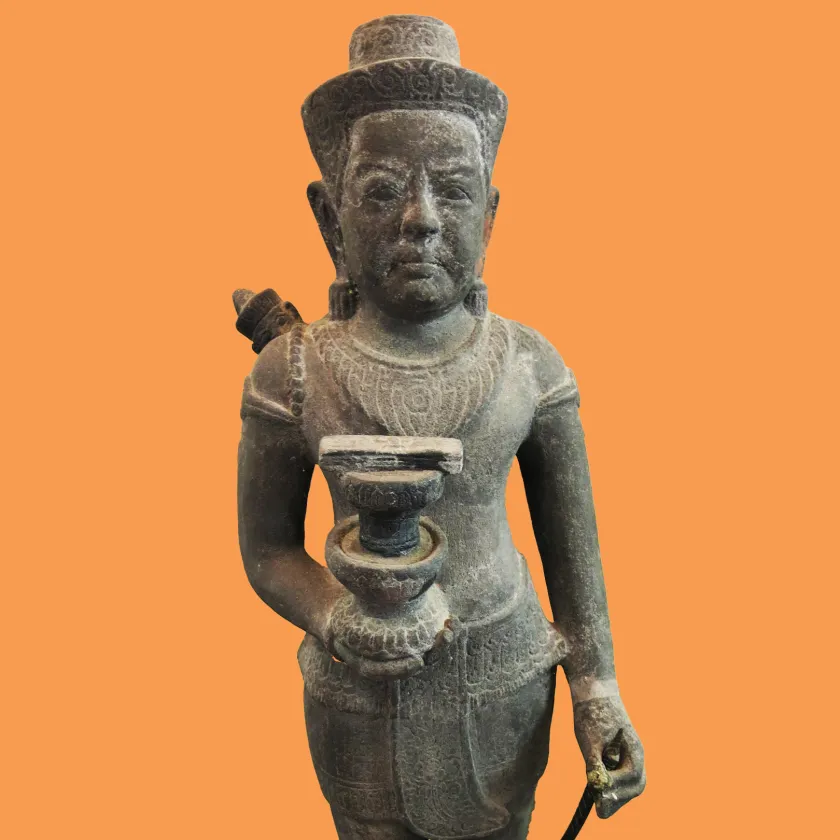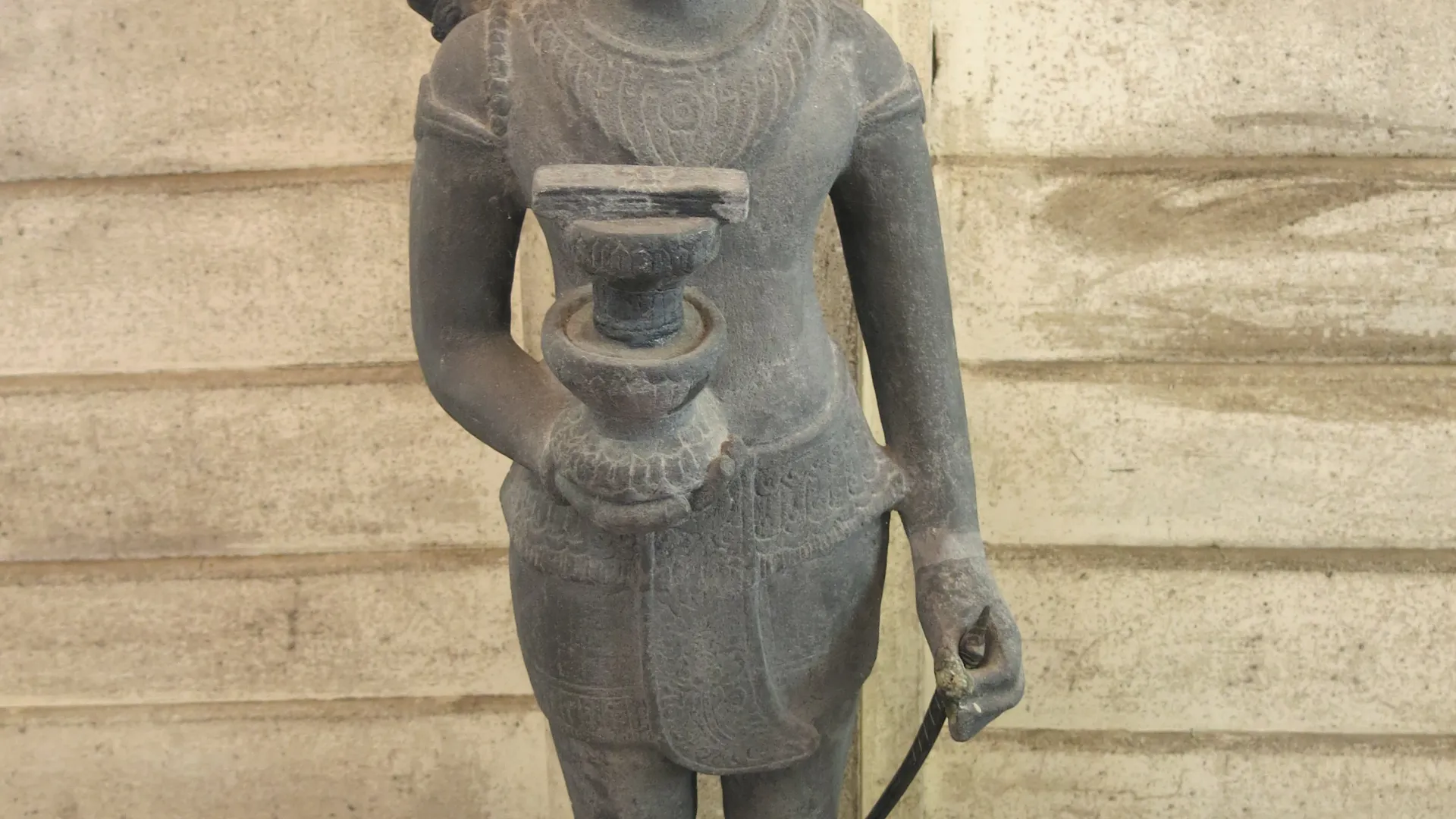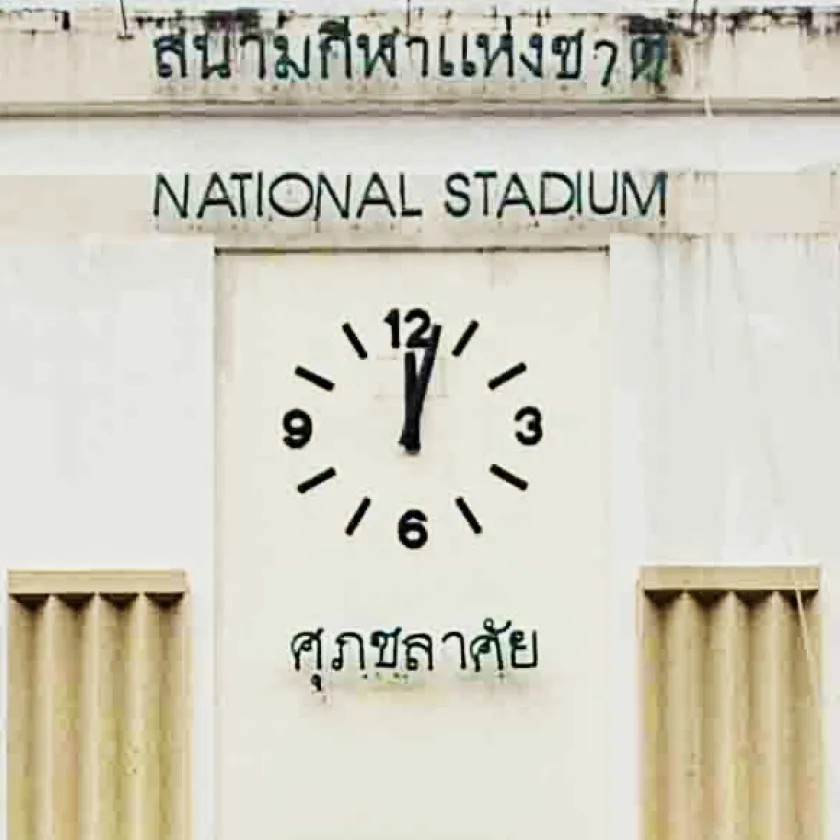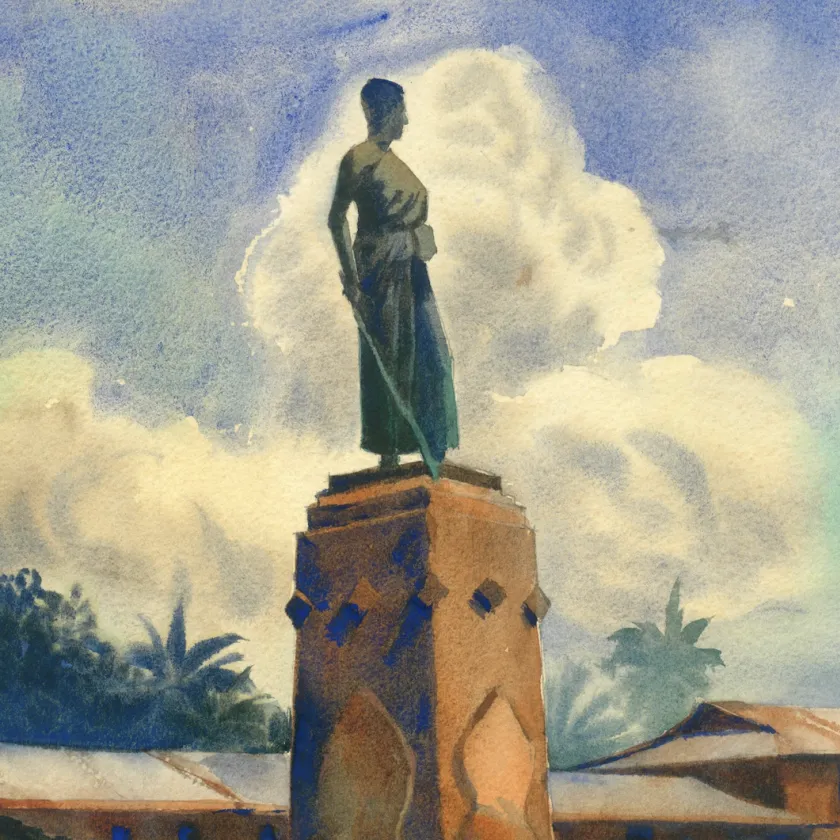Prior to the rule of King Chulalongkorn, it is known that Thai sculpture work, if not created for household items or used in religious ceremonies, will largely reflect a strong faith in Buddhism, as seen in the creation of Buddha images, sculptures, castings, or carvings used to decorate temples. When the country officially transitioned to an absolute monarchy under King Chulalongkorn (Rama V), sculpture work was adapted to emphasize the virtues of the monarch, blending sacredness into the individual, such as creating a likeness of the king with qualities resembling a god (apotheosis) until the post-revolution period after 1932 when the People’s Party attempted to present modern art, including conventional sculpture, to break away from the constraints of the old establishment, while also supporting the idea of equality that centered the people. This was accompanied by the creation of architectural designs and artworks that served as media of expression for the democratic aspirations of the state. Conversely, the public showed awareness of the arrival of a new order through the creation of objects with patterns reflecting constitutional principles and symbols of governance in a democratic regime. This sculpture of Phraya Phahonphonphayuhasena is one such example. The sculpture indicates a modern political outlook that is interestingly intermixed with traditionalist ideas of the old era.
The sculpture of Phraya Phahonphonphayuhasena was created on December 4, 1933, by Mr. Soonha Tawalaphan, a Thai of Chinese descent who had faith in the 1932 revolution. He sculpted this figure to give as a souvenir to Phraya Phahon, one of the leaders of the revolution. The sculpture, a deity image carved from sandstone, is named "Lord Shiva in the Posture of Vanquishing the Demon Trio, in Reverence for the Constitution of Siam." It is approximately 60 centimeters tall, with the right hand holding the constitution. On the left shoulder perches a small sculpture of a person. The face of the deity image is based on Phraya Phahonphonphayuhasena's likeness. The creation of the sculpture draws from the ancient belief in creating god-like images of ordinary people. The creator used symbols that indicate the belief that those capable of changing governance or leading a country are holy individuals or meritful beings incarnate. The small figure on the shoulder is explained as a symbol representing the people who Phraya Phahonphonphayuhasena has led into the new regime; this however conflicts with the democratizing view of Khana Ratsadon (after the creator presented it to Phraya Phahonphonphayuhasena, the former Prime Minister retained it as personal property, never displaying it anywhere). Still, the personal investment by an ordinary citizen in creating this sculpture reflects an awareness and a deep appreciation of the 1932 Revolution, together with hope for a better future under the leadership of the new regime.
Throughout the life of Phaya Phahon, this sculpture in the form of a deity was never publicly displayed. People became aware of its existence only after some of Phaya Phahon's collected items were exhibited at the Phaya Phahonphonphayuhasena Museum, within the Artillery Center, Phaholyothin Camp, Lopburi Province. Following the People's Party's promotion of modern art concepts, we rarely see creations that exalt individuals to the level of deities, except for deity images that follow the People's Party's ideal of physically fit citizens, such as the "Phra Phalabadi on a Three-Headed Elephant" sculpture at the National Stadium, which features a muscular body. In contemporary times, the advent of social media led to the creation of memes or humorous parodies by editing photos of iconic pro-democracy figures or politicians, overlaying them with elements that appear sacred and superhuman. However, this approach carries different intentions and meanings compared to the aforementioned deifying sculptures.




